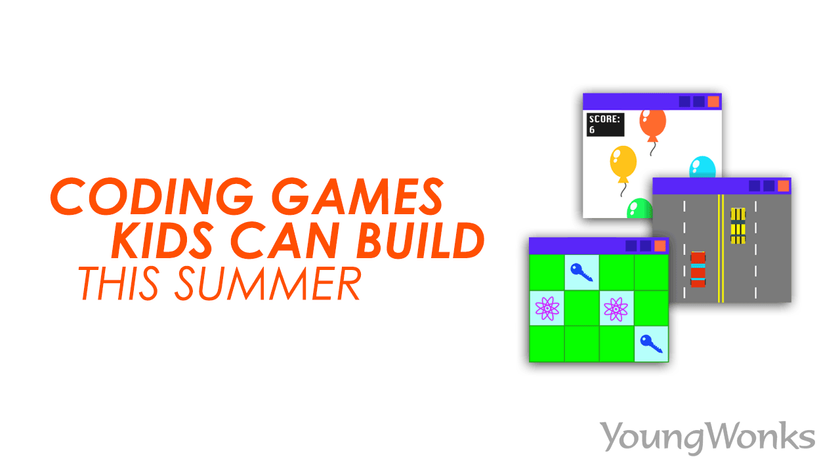Jun 19, 2019 By Team YoungWonks *
The summer holidays are on and what better time than now for kids to build some DIY coding games. YoungWonks brings you a list of simple, easy to build coding games that children can make themselves this summer. The games have been shared below in alphabetical order.
Car Escape
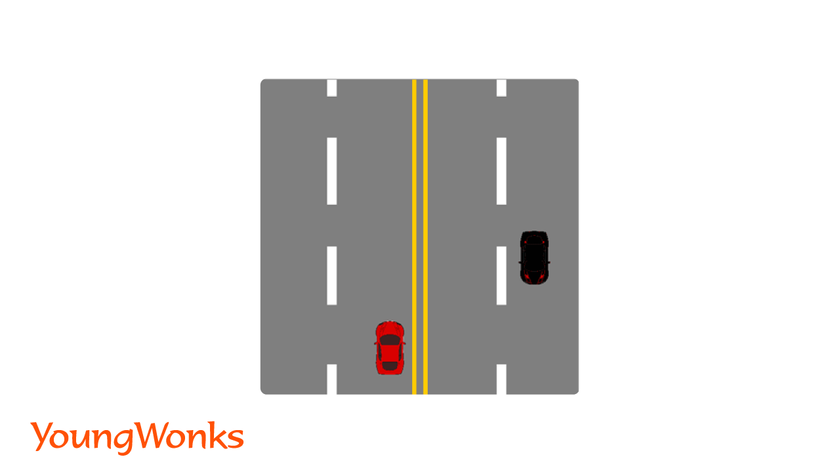
What’s the game about and how to play it: As the name suggests, the game is about a player escaping in a car and here the player has to reach his/ her destination (at a location 1000 miles away) as soon as possible. The player’s car has nitro boost that can be used to increase the speed of the car but it can also lead to an accident.
The player can control the car with the up, left and right arrow keys. The up arrow key turns on the booster. If the up arrow is not pressed, the car will move forward, but at a much slower speed. The player has to reach the destination without meeting any accident. The game is over if the car runs into (touches) any of the cars coming from the other side.
Software needed:
a. Pygame installed on your computer. (Check our blog on installing PyGame on your Mac here: https://www.youngwonks.com/blog/How-to-Install-PyGame-on-a-Mac and our blog on installing PyGame on your Windows PC here: https://www.youngwonks.com/blog/How-to-Install-PyGame-on-Windows)
b. Working knowledge of: lists, if-elif-else conditions, key events, classes and objects (since there can be multiple cars coming from the other side) and random module.
Tips / Hints:
- Add the scrolling effect on the road image by using a variable for the y-coordinate of the image.
- Create two classes; one for the player and other for the other cars.
- Use a list to store the other cars and keep updating the list (adding and removing cars) on certain conditions.
Find the Rat

What’s the game about and how to play it: The game is about the player looking for a rat in the room. Whenever the player sees the rat, he/ she needs to click on it. The player needs to click at the exact position of the rat. The game is over if the player misses the rat twice.
Software needed:
a. Pygame installed on your computer.
b. Working knowledge of: if-elif-else conditions, mouse events and random module.
Tips / Hints:
- Use the random module to place the rat at random locations.
Guess the Number
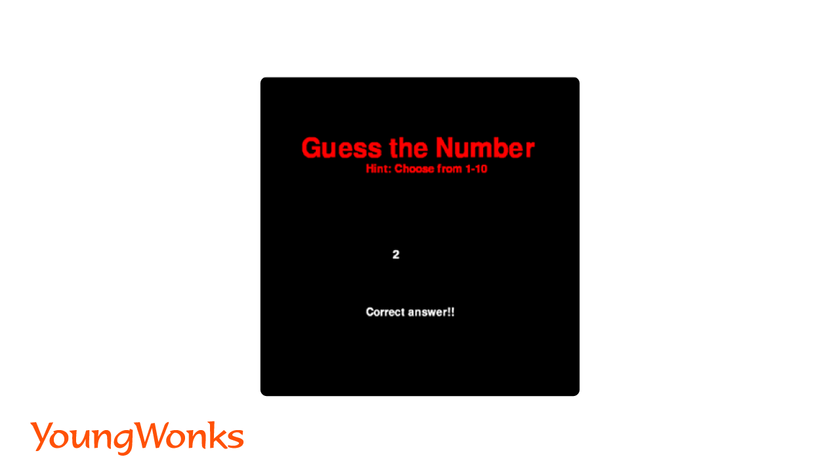
What’s the game about and how to play it: The game has the player guess a number even as it gives the player a hint to help him/ her choose the number. If the guess is correct (i.e. matches with the number), the score of the player increases by one. The player guesses the number and types it in. He/ she can keep playing the game up until the point when he/ she gets three guesses wrong.
Software needed:
a. Pygame installed on your computer.
b. Working knowledge of: if-elif-else conditions, key events and random module.
Tips / Hints:
- Concatenate the pressed key in a string variable and keep updating it until the length of this string is equal to the length of the actual number (stored as string) and then perform the comparison.
Jumbled Words

What’s the game about and how to play it: It is a game that tests the player’s thinking skills. The game has a list of words. One word is chosen at a time and the letters are jumbled up. The player has to type the correct word. The screen shows a jumbled word and the user has to type the correct word. The goal of the game is to guess the correct word. The game is over once the player gets two wrong answers.
Software needed:
a. Pygame installed on your computer.
b. Working knowledge of: lists, if-elif-else conditions, key events and random module.
Tips / Hints:
- Store the words in a list. Pick up a random word and jumble it using the random module.
- Store the letters entered by the user in a string and compare the string with the actual word. If they are equal, jumble another random word.
Luck
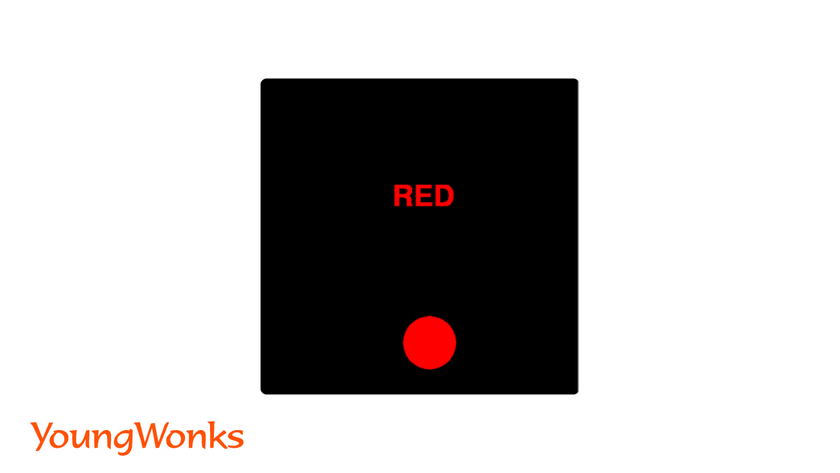
What’s the game about and how to play it: As indicated by the name, this game is purely based on luck. The player sees the name of a color and a circle in a certain color on the screen. He/ she needs to click anywhere in the circle. With each click, the circle will change its color. If the player gets the same color as mentioned at the top within three clicks, the color name gets randomized and the score of the player increases by one. The player to try and score as high as possible.
Software needed:
a. Pygame installed on your computer.
b. Working knowledge of: lists, if-elif-else conditions, mouse events and random module.
Tips / Hints:
- Pick a random color out of a list of colors.
- With every click, choose a random color for the circle from another list of RGB tuples.
Memory Game
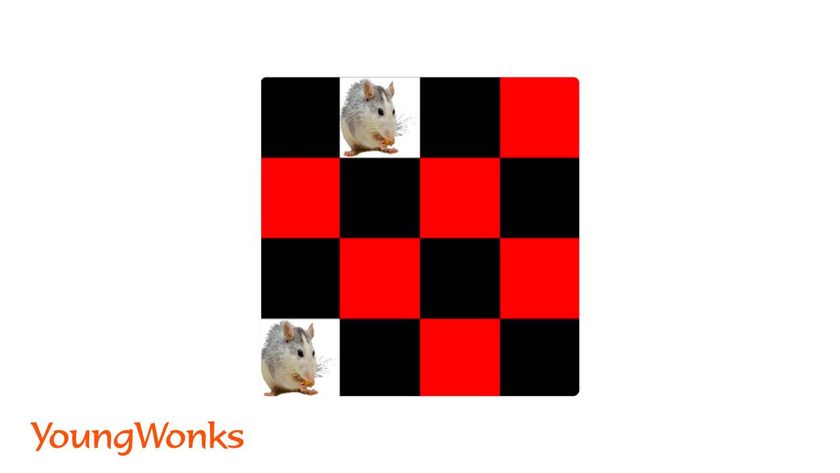
What’s the game about and how to play it: The game consists of 16 boxes. There are 8 pairs of images hidden under the black and red boxes. The images are placed randomly under the boxes.
Clicking on any box will reveal the image under it. The player has to click on the boxes and find the pairs. If the second box that’s selected doesn’t pair with the first box, the images get hidden again. The player has to select the correct boxes to make the pairs and reveal all the images.
Software needed:
a. Pygame installed on your computer.
b. Working knowledge of: lists, dictionaries, if-elif-else conditions, mouse events and random module.
Tips / Hints:
- Store the images in a list and shuffle the list.
Pop the Balloon
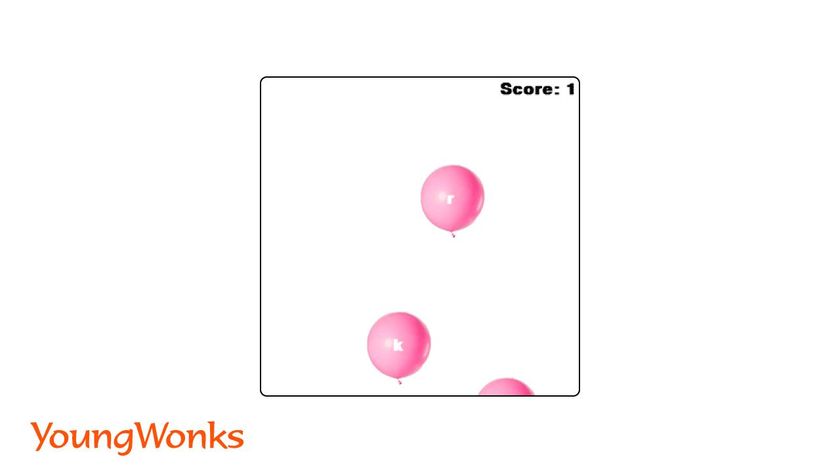
What’s the game about and how to play it: The game consists of balloons which keep coming up from the bottom of the screen.
Each balloon has a letter inside it. The player has to type the letter seen on any of the balloons. The player needs to keep popping the balloons; if the player misses three balloons, the game is over.
Software needed:
a. Pygame installed on your computer.
b. Working knowledge of: lists, if-elif-else conditions, key events, classes and objects (since there can be multiple balloons to pop) and random module.
Tips / Hints:
- Keep adding a new balloon to a list whenever a key is pressed, so that the user always gets a new balloon on every key press.
- Remove a balloon from the list if the balloon letter matches with the typed key.
Remember the Keys
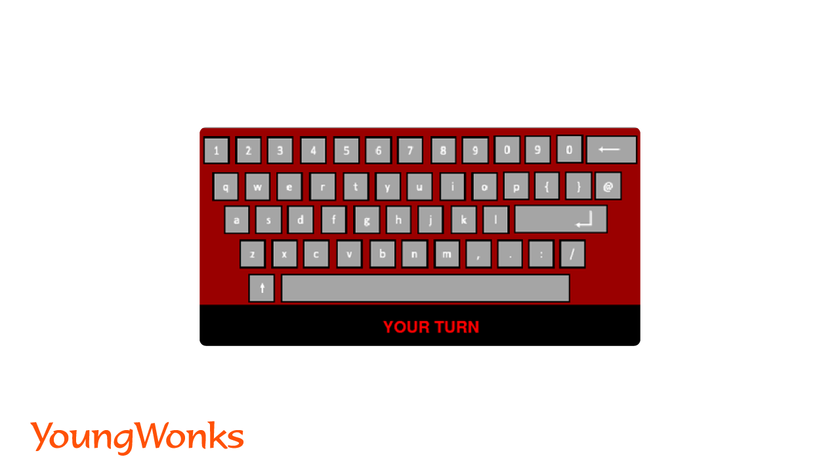
What’s the game about and how to play it: The game has several levels. At each level, the player has to remember the letters. The number of letters he/ she needs to remember matches the level number. To start with, the player is shown a marker on the key(s). At any time, only one key has a marker that stays on it for about half a second. When the game says “Your turn”, the player has to press the key(s) that had the marker(s). Since there is no limit to the number of levels in this game, the player’s goal is to reach as high a level as possible.
Software needed:
a. Pygame installed on your computer.
b. Working knowledge of: lists, dictionaries, if-elif-else conditions, key events and random module.
Tips / Hints:
- Store the position of the letters of the image in a dictionary. The keys of the dictionary should be the letters and the values should be their positions.
- Draw a circle (which acts as the marker) at random position selected from the dictionary.
- Store the letters to type in a list.
- Add a function which accepts a list of letters to type as an argument. In the function, let the user type the letters and store them one by one into another list. Compare the two lists. If they match, increase the level by 1.
Expand Your Child's Coding Journey This Summer
For those looking to take the fun and learning of coding games a step further, exploring structured Coding Classes for Kids can be an excellent opportunity. YoungWonks offers a variety of Summer Camps for Kids, including a specialized Coding Summer Camp designed to immerse young learners in the world of coding. These programs provide an excellent blend of education and entertainment, ensuring kids can build on their coding skills while enjoying their summer break to the fullest.
*Contributors: Research by Rohit Budania; Written by Vidya Prabhu; Lead image by: Leonel Cruz
